Lent
Ideas for Prayer, Fasting, and Almsgiving

Lent is a special time in the Church. It lasts for 40 days, not counting Sundays. During this time, we remember how Jesus fasted and prayed in the desert. We try to follow His example.
People often pray more, give to others, and give something up during Lent. These small sacrifices help us grow closer to God. They also remind us that Jesus gave everything for us.
Lent helps us slow down and focus. We get ready for Easter by turning back to God. It’s a time to clean up our lives and open our eyes to the needs of others.
Each day in Lent is a chance to grow. God is always ready to help us begin again.
All Catholics, young and old, can participate in these practices. See information on each of these in the sections below, along with specific ideas on how to practice them.
Lent begins on Ash Wednesday. Also see the calendar page for ideas related to specific Sundays in Lent. For Holy Week see
Prayer Ideas for Lent
Prayer is an essential part of the Lenten journey, as it allows individuals to deepen their relationship with God and seek guidance and strength. We will explore various prayer ideas for Lent that can help you connect with God in meaningful ways.
During Lent, it is important to set aside dedicated time for prayer. This can be done through traditional prayer practices such as reciting the Lord’s Prayer or praying the Rosary. However, it is also an opportunity to try new prayer routines and methods. Consider incorporating silent meditation, journaling, or praying with Scripture into your daily prayer time. These practices can help you to quiet your mind, reflect on God’s Word, and listen for His guidance.
In addition to personal prayer, Lent is a time to pray for others. There are many people who are in need of prayers, such as the sick, the lonely, and those facing difficult circumstances. Take time each day to lift up these individuals in prayer, asking God to provide comfort, healing, and strength.
As we embark on this Lenten journey, let us open our hearts to God’s presence and guidance through prayer. Let us seek God’s presence and grow in our faith as we journey through this sacred season.
Ways to Pray
During Lent, it is important to explore different prayer routines and methods to deepen your connection with God. This season offers a unique opportunity to try new approaches to prayer that can enhance your spiritual journey. Here are a few ideas to consider:
Expand your prayer repertoire by learning a new traditional Catholic prayer. Whether it’s the Act of Contrition, the Memorare, or the Prayer to St. Michael the Archangel, incorporating these prayers into your daily routine can bring a sense of reverence and tradition to your Lenten prayers.
Instead of simply reading Scripture, try engaging with it in a more interactive way. Choose a passage that resonates with you and spend time meditating on its meaning. Reflect on how it applies to your life and ask God to reveal His message to you through His Word.
In addition to Sunday Mass, consider attending weekday Mass during Lent. This can provide a quiet and reflective atmosphere for prayer and worship. Take advantage of the opportunity to receive the Eucharist more frequently and allow it to nourish your soul.
Writing can be a powerful form of prayer and reflection. Start a journal where you can pour out your thoughts, feelings, and prayers to God. Alternatively, create gratitude lists to cultivate a spirit of thankfulness during Lent. Write down the blessings and graces you have received, and offer prayers of gratitude for them.
By exploring these different ways to pray during Lent, you can deepen your spiritual connection with God and experience a more meaningful Lenten journey. Incorporate these practices into your daily routine and allow them to guide you closer to God’s presence.
- Receive the Sacrament of Reconciliation (Confession)
- Attend Stations of the Cross
- Pray By Putting Yourself in a Gospel Scene
- Make a Gratitude List Every Day and Pray with It
- Say a Rosary
- Learn a New Prayer
- Go to a Weekday Mass
- Read a Story from the Gospels
- Pray the Night Prayer from Liturgy of the Hours
- Start a Prayer Journal
- More Catholic Prayers
Receive the Sacrament of Reconciliation (Confession)
Consider going to reconciliation as a family or with a youth group or youth ministry. This sacrament is a powerful way to receive God’s forgiveness and experience His grace. Afterward, take the opportunity to celebrate this beautiful gift. Plan a special outing, such as going out for pizza together, to commemorate the reconciliation and the renewal of your spiritual journey. By making this a shared experience, you not only strengthen your bond as a family or community but also reinforce the importance of forgiveness and reconciliation in your lives.
Attend Stations of the Cross
Stations of the Cross is a beautiful Lenten tradition that allows us to journey with Jesus to Calvary. This devotion invites us to reflect on his suffering for us and his encounters along the way. As we walk the path with Jesus, we are reminded of his immense love and sacrifice. Attending the Stations of the Cross provides a powerful opportunity for prayer and contemplation during Lent. It helps us to deepen our understanding of Jesus’ passion and strengthens our connection to him. Joining this solemn and meaningful practice can be a profound way to engage in the Lenten season and grow closer to our Savior.
Pray By Putting Yourself in a Gospel Scene
St. Ignatius of Loyola believed that God gave us our imaginations and could use this gift to speak to us. One method of praying in the tradition called Ignatian Contemplation is to put yourself in a gospel scene and see it come alive. Imagine yourself walking alongside Jesus as he performs miracles or teaches his disciples. Visualize the details of the scene, the expressions on people’s faces, and the emotions in the air. By immersing yourself in the gospel scene, you can deepen your understanding of Jesus’ teachings and develop a personal connection with him. This form of prayer allows you to engage with the scriptures in a unique and meaningful way.

Make a Gratitude List Every Day and Pray with It
Making a gratitude list every day and praying with it is a powerful way to deepen your prayer life during Lent. By intentionally noticing and acknowledging the things you are grateful for, you become more aware of God’s constant presence in your life.
This practice can transform your attitude and outlook, helping you to cultivate a spirit of gratitude and contentment. Taking just a few minutes each day to reflect on and pray with your gratitude list can bring about a profound shift in your perspective and draw you closer to God. Embrace this simple yet impactful practice during Lent.
Say a Rosary
The rosary is one of the most misunderstood Catholic devotions. While some non-Catholics see it as worshiping Mary, it is in fact focused on Christ. The mysteries of the rosary are based on important events in the life of Christ. By praying the rosary, Catholics meditate on these mysteries and deepen their relationship with Jesus. Each bead represents a prayer, allowing for a rhythmic and contemplative experience. The repetition of the prayers helps to quiet the mind and open the heart to God’s presence. During Lent, saying a rosary can be a powerful way to reflect on Christ’s sacrifice and journey towards Easter.
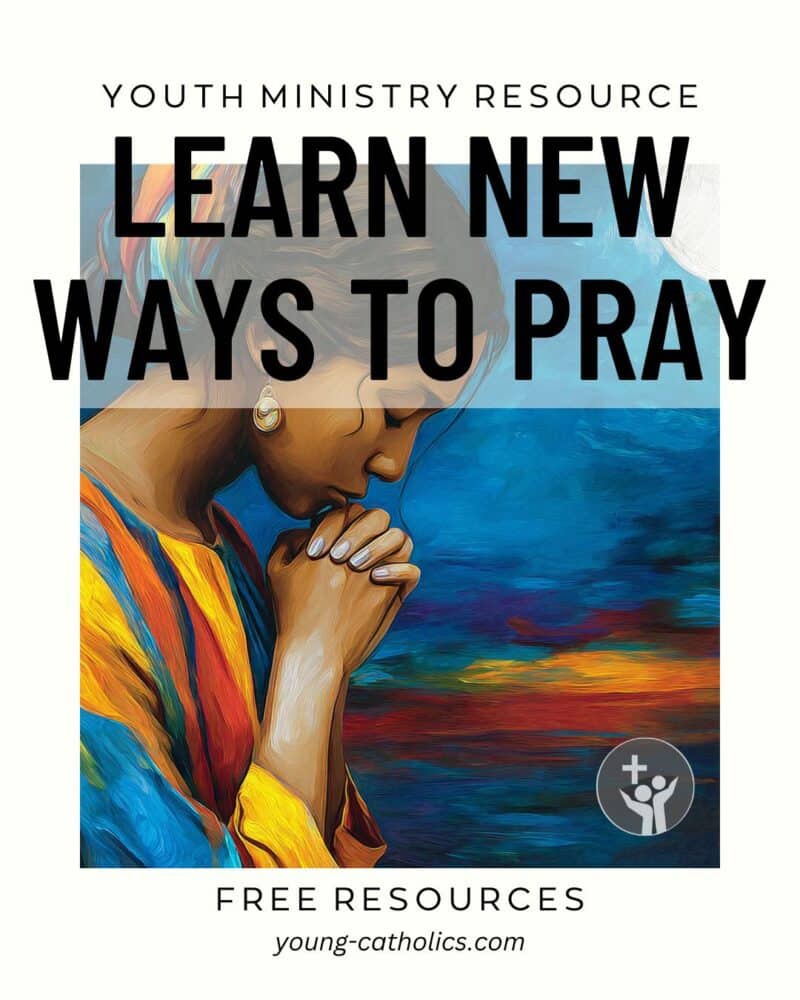
Learn a New Prayer
To deepen your Lenten prayer experience, consider learning a new prayer. Exploring different types of prayer can keep your spiritual life fresh and invigorating. One option is to try sitting and listening, allowing yourself to be still and open to God’s presence. Another approach is to engage in Lectio Divina, a less structured form of prayer that involves reading and meditating on Scripture.
Additionally, traditional prayers can bring comfort and inspiration during this season. By incorporating new prayers into your routine, you can enhance your connection with God and enrich your Lenten journey.
Go to a Weekday Mass
Attending a weekday Mass during Lent is a powerful way to deepen your connection with God. Despite the busyness of our Monday through Friday routines, making time for Mass can bring immense spiritual benefits. It allows us to pause, reflect, and receive the Eucharist, nourishing our souls and strengthening our faith. If weekdays are truly challenging, consider attending a Saturday morning Mass instead. This small sacrifice can have a profound impact on your Lenten journey, helping you to grow closer to the Lord and experience His grace in a more profound way.

Read a Story from the Gospels
Get together with your family to read a gospel story this Lent. This is also a great activity for Sunday school or youth ministry. You can select one from the daily mass readings. But sometimes the daily gospel can be difficult to understand, especially for younger children.
To make it more accessible, consider using a children’s Bible or a simplified version of the gospel story. This will help engage everyone and make the message of the gospel more relatable. It’s a beautiful way to deepen your understanding of Jesus’ teachings and reflect on how they apply to your own life during this Lenten season.
Pray the Night Prayer from Liturgy of the Hours
Praying the Night Prayer from the Liturgy of the Hours is a beautiful and peaceful way to conclude your day during Lent. While some may consider it “old fashioned,” many people, including teens and children, can appreciate its significance. This prayer allows you to reflect on your day, seek forgiveness, and find solace in God’s presence before resting. It provides a sense of tranquility and helps you to let go of any worries or burdens from the day. Incorporating the Night Prayer into your Lenten routine can deepen your spiritual connection and bring a sense of peace to your heart.
Start a Prayer Journal
A prayer journal can be a valuable tool during Lent to help us deepen our prayer lives. By keeping a journal, we can stay focused and intentional in our prayers. This practice is particularly beneficial for teens who are seeking to establish a prayer routine. In your prayer journal, you can write down your thoughts, reflections, and intentions. It allows you to track your spiritual journey and see how your prayers are answered over time. By incorporating a prayer journal into your Lenten practices, you can cultivate a deeper connection with God and experience the transformative power of prayer.
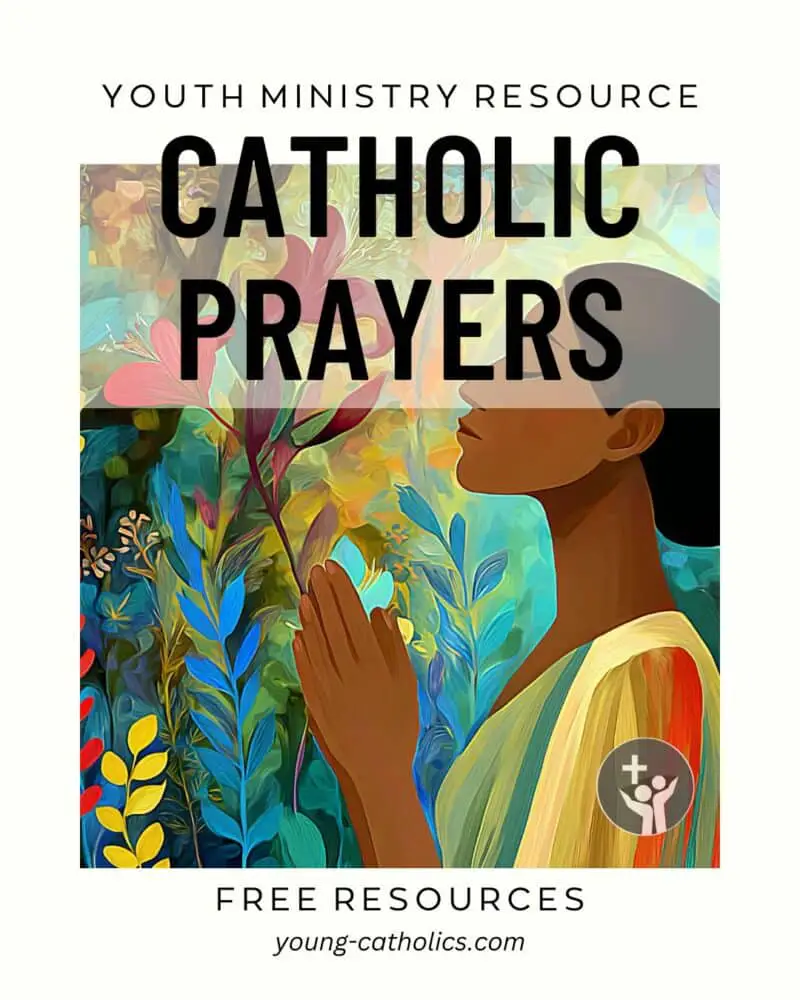
More Catholic Prayers
For those looking to deepen their prayer life during Lent, there are many more Catholic prayers and prayer ideas available. Exploring these additional prayers can provide a variety of ways to connect with God and nourish your spiritual journey. Whether it’s traditional prayers like the Our Father or Hail Mary, or lesser-known prayers like the Prayer to St. Michael or the Memorare, there are countless options to choose from.
Additionally, you can find prayer ideas such as praying with Scripture, using prayer cards, or incorporating music into your prayer time. These resources can help you discover new ways to pray and experience a deeper connection with God during the Lenten season.
People Who Need Prayers
During Lent, it is important to consider the individuals who need prayers in our lives and in the world around us. One group of people to focus our prayers on is those who have hurt us. It can be challenging to pray for those who have caused us pain, but it is an opportunity for growth and healing. By offering prayers for their well-being and forgiveness, we can release any resentment or anger we may hold and find peace within ourselves.
Another person who often asks for prayers is Pope Francis. As the leader of the Catholic Church, he carries the weight of guiding millions of believers worldwide. Praying for Pope Francis and his intentions can support him in his mission and provide strength and wisdom to lead the Church.
In addition to praying for individuals in positions of authority, we should also remember to pray for our parish priests, leaders, and teachers. They play a vital role in our spiritual growth and need our prayers for guidance, strength, and perseverance in their vocations.
Lent is also a time to extend our prayers to those who are less fortunate, such as the homeless and those in need of care. By praying for their well-being, we can show compassion and solidarity, and seek ways to support and help them in their struggles.
Lastly, it is essential to remember to pray for ourselves. Lent is a time of self-reflection and personal growth. By seeking God’s guidance and strength through prayer, we can find the courage to confront our own weaknesses and strive for personal transformation.
In this season of Lent, let us remember the people who need prayers, both in our personal lives and in the wider world. Through our prayers, we can bring comfort, healing, and hope to those who need it most.
Pray for Somebody Who Has Hurt You
If you are holding onto resentment towards someone who has hurt you, praying for them can be a powerful way to find healing and forgiveness. It may be difficult to know where to start, but you can begin by praying from your heart. If you need some guidance, here is a simple prayer to help you get started. Remember, prayer has the power to transform hearts and bring about reconciliation.
Pray for Our Holy Father
Praying for our Holy Father, Pope Francis, is a meaningful way to participate in the Lenten season. As the leader of the Catholic Church, he carries immense responsibilities and faces numerous challenges. By offering our prayers, we can support him in his mission and ask for God’s guidance and strength for him. Pope Francis himself has humbly requested our prayers, recognizing the power of collective prayer. Let us remember him in our daily prayers, asking for wisdom, courage, and blessings upon his ministry. Together, we can uplift our Holy Father and contribute to the spiritual journey of Lent.
Pray for a Forgiving Heart
Sometimes, forgiving someone who has hurt us can be a difficult and painful process. While we may understand the importance of forgiveness intellectually, our emotions may still be raw and resistant. In these moments, it is crucial to turn to prayer for guidance and healing. By praying for a forgiving heart, we invite God’s grace into our lives and ask for the strength to let go of resentment and anger. Through prayer, we can find solace and peace, allowing our hearts to heal and grow in compassion. Let us offer this prayer, seeking the divine intervention needed to cultivate forgiveness within ourselves.
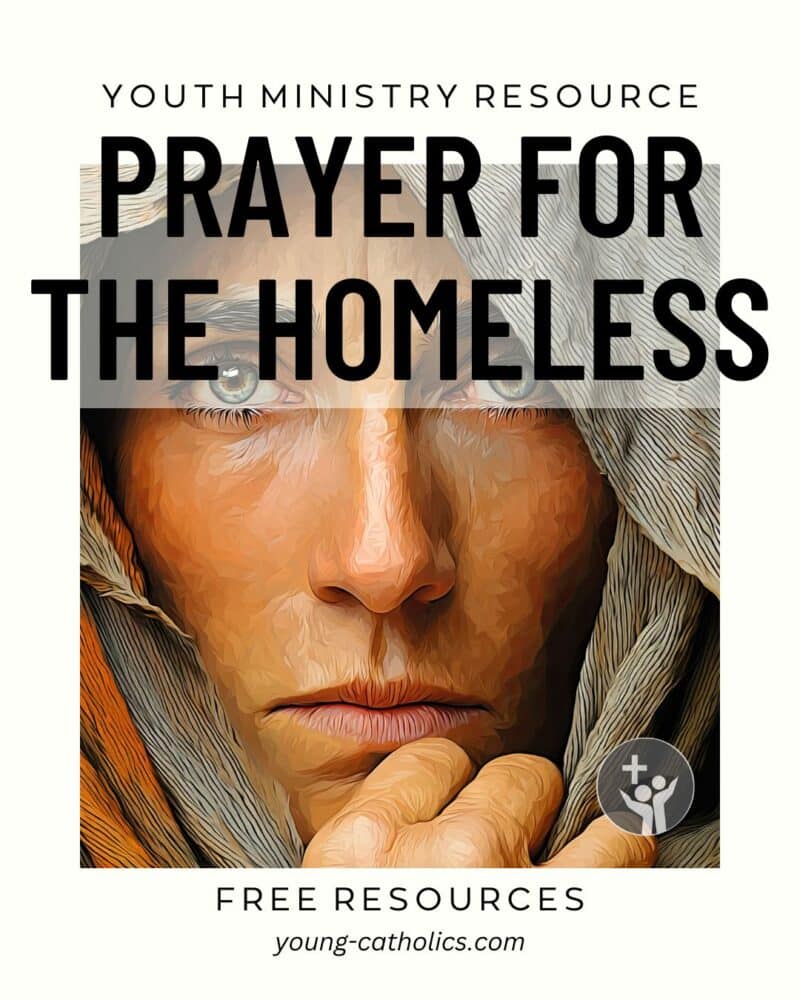
Pray at Bedtime for Those Sleeping on the Street
As we prepare to rest in the comfort of our own beds, let us take a moment to remember those who do not have the same luxury. In every city, there are individuals who are homeless and must sleep on the streets, exposed to the elements.
Before we climb into our beds, let us offer a prayer for these individuals, asking for their safety, protection, and provision. May our prayers bring them comfort and may they find hope and support in their time of need. Let us remember them in our bedtime prayers, extending our compassion and love to those who are less fortunate.

Pray for More Vocations to the Priesthood
Praying for more vocations to the priesthood is crucial for the future of the Catholic Church. The need for priests is evident, as dedicating one’s life to serving the Church goes against societal norms, making it challenging to attract young people. Many may not even consider the priesthood or feel unworthy of such a calling.
However, it is essential to remember that God calls each of us to a specific vocation. Therefore, we should fervently pray that those who are being called to the priesthood will hear and respond to that divine call, ensuring the continuation of the Church’s mission.
Prayer Crafts and Activities
Engaging in crafts and activities can be a meaningful way for youth to deepen their prayer experience during Lent. These hands-on practices can help them connect with their faith in a tangible and interactive way. Here are a few ideas to incorporate into your Lenten prayer routine.
One simple yet powerful craft is creating a prayer chain. Cut strips of colored paper and write a prayer intention on each one. As you link the strips together, you are visually representing the interconnectedness of prayers and the unity of the community. Hang the prayer chain in a prominent place as a reminder to pray for these intentions throughout Lent.
Another idea is to set up a prayer table in your home. Choose a special spot and decorate it with symbols of Lent, such as a cross, candles, or a small bowl of water. Encourage family members to gather around the table for prayer and reflection. This dedicated space can serve as a visual reminder to prioritize prayer during this season.
Prayer rocks are another creative way to engage in prayer. Find smooth stones and decorate them with symbols or words that represent your prayer intentions. Hold the rocks in your hands as you pray, allowing their weight to ground you and remind you of the presence of God.
Incorporating prayer into everyday activities can also be meaningful. For example, you can make pretzels together as a family and say a prayer of gratitude for the nourishment they provide. Or, consider participating in the Stations of the Cross, either at your local church or by creating your own stations at home. This interactive prayer experience allows you to reflect on the journey of Jesus and his sacrifice.
By incorporating prayer crafts and activities into your Lenten practice, you can create meaningful moments of connection with God and deepen your spiritual journey. These hands-on practices can engage your senses and help you reflect on the significance of this season.
Make a Prayer Chain
A prayer chain is a powerful way to visually represent our prayers. It can be especially beneficial for children, as it teaches them about the various types of prayer, such as adoration, petition, intercession, and thanksgiving. To create a prayer chain, gather four different colors of construction paper and cut them into strips. Assign each color to a specific type of prayer. As you pray, write down your intentions on the corresponding colored strip and link them together to form a chain. This physical representation serves as a reminder of the prayers offered and can be a meaningful visual aid in deepening one’s prayer life.
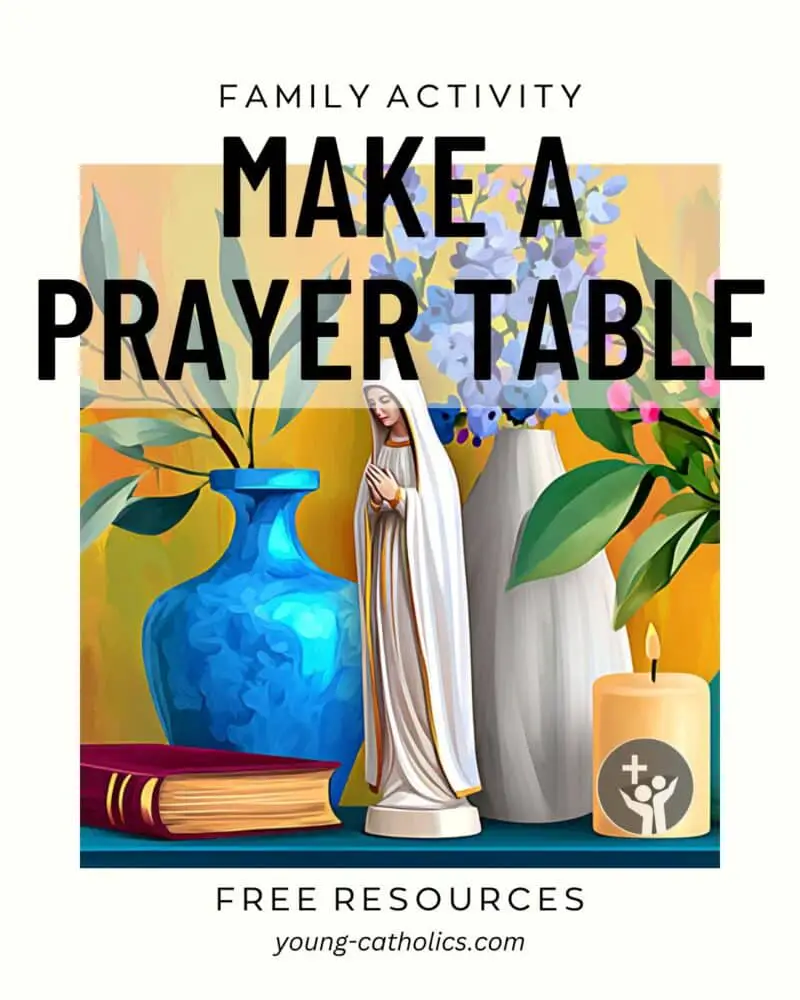
Make a Prayer Table in Your Home
To create a prayer table in your home, find a small table or shelf that can serve as a dedicated space for prayer. Decorate it with items that hold spiritual significance to you, such as a Bible, a cross, or religious artwork. Include a small candle that you can light during your prayer time to symbolize the presence of God.
This sacred space can be used for personal prayer or as a gathering place for family or friends to pray together. Having a designated prayer table can help create a peaceful and focused atmosphere for your prayer practice.
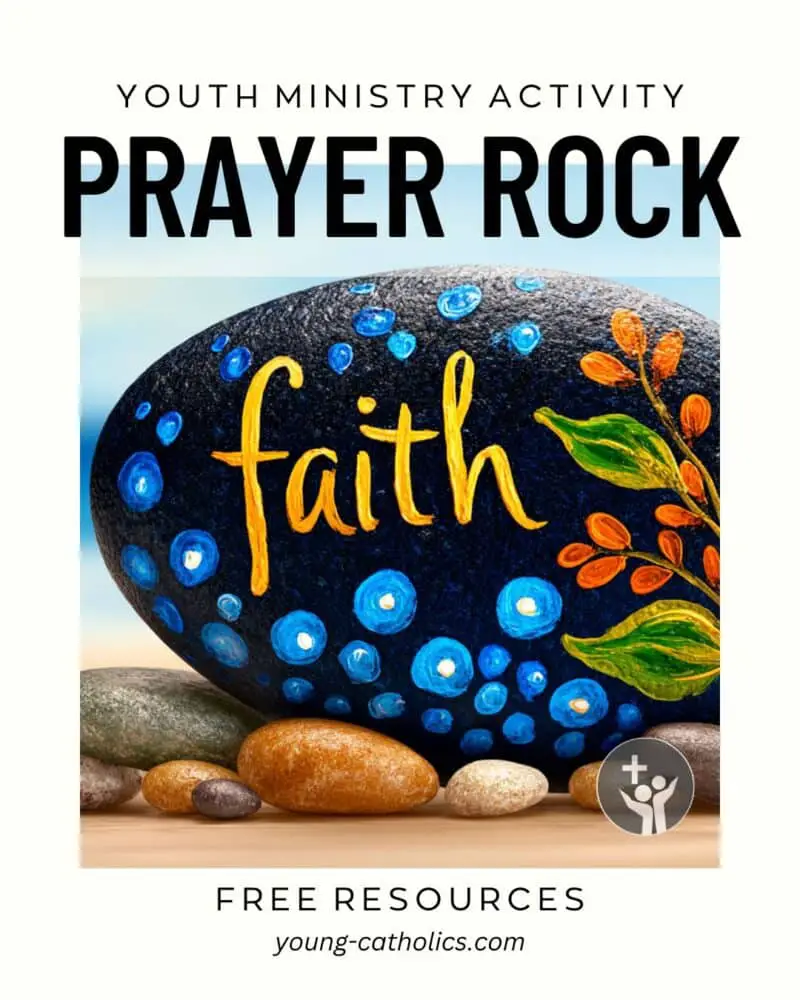
Make a Prayer Rock
A prayer rock is a tangible reminder to incorporate prayer into your daily life. This small, portable item can serve as a visual cue to pause and connect with God throughout the day.
Parents can place prayer rocks on their children’s pillows, encouraging them to pray before bed. Teens can keep them in their backpacks or lockers, providing a gentle reminder to pray during the school day. Adults can place them on their desks or carry a small one in their pocket or purse, allowing for moments of prayer and reflection wherever they go. Incorporating a prayer rock into your routine can help deepen your spiritual practice.
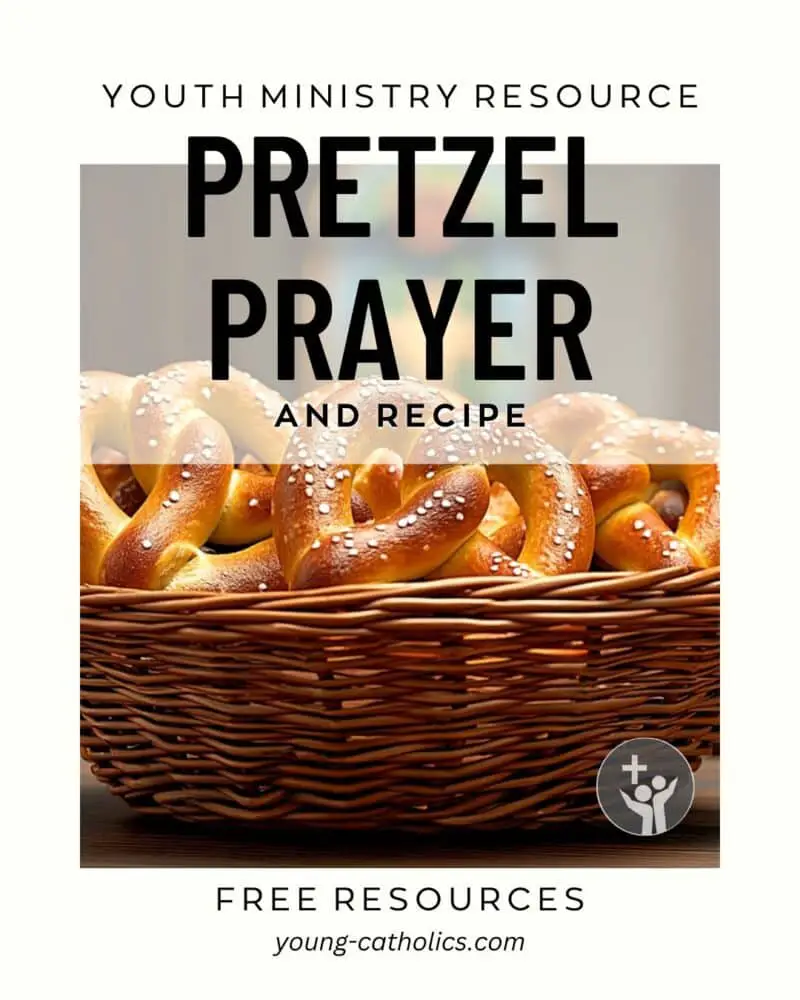
Make Pretzels and Say a Prayer
The pretzel, a symbol of prayer, is made with simple ingredients and shaped like hands in prayer. Making pretzels can be a meaningful and delicious way to incorporate prayer into your Lenten practice. Gather the ingredients and follow a simple pretzel recipe, taking time to reflect on the significance of each step.
As you twist the dough into the pretzel shape, consider the act of prayer and the connection it brings to your spiritual journey. When the pretzels are ready, say a prayer of gratitude and intention before enjoying them, savoring the nourishment for both body and soul.
First Person Stations of the Cross
In the First Person Stations of the Cross, youth are invited to embark on a unique meditation journey. By envisioning themselves at each station, they can connect with the emotions and experiences of Jesus during his crucifixion. This interactive approach allows them to personalize the prayers and reflect on how the stations relate to their own lives. Through this immersive experience, youth can deepen their understanding of Jesus’ sacrifice and find inspiration for their own Lenten journey. This powerful exercise encourages empathy, introspection, and a deeper connection to the meaning of Lent.
New Places to Pray
Finding new places to pray can bring a fresh perspective to your prayer routine during Lent. Stepping outside of your usual prayer space can help you connect with God in different ways and deepen your spiritual experience. Here are a few ideas for exploring new places to pray.
One option is to go for a walk in nature. Find a nearby park, forest, or beach and take a leisurely stroll. As you immerse yourself in the beauty of creation, allow the sights, sounds, and smells to inspire your prayers. Take time to reflect on God’s presence in the natural world and offer gratitude for the wonders around you.
Another idea is to visit a garden. Many cities have public gardens or botanical gardens that offer serene and peaceful environments. Find a quiet spot among the flowers and plants, and use this tranquil setting as a backdrop for your prayers. The beauty and tranquility of the garden can help you find peace and focus as you communicate with God.
If you’re looking for a more structured prayer experience, consider finding a Christian prayer labyrinth in your area. Labyrinths are ancient symbols of spiritual journeys, and walking through one can be a meditative and prayerful experience. As you navigate the winding paths, allow your mind to quiet and your heart to open to God’s presence.
Exploring new places to pray can invigorate your prayer life and deepen your connection with God during Lent. Whether it’s in nature, a garden, or a labyrinth, these new environments can provide a fresh perspective and help you experience God’s presence in a unique way.

Prayer Labyrinth
A prayer labyrinth, typically circular with an intricate path, serves as a unique tool for enhancing prayer. Designed for walking while praying, it aids in focusing the mind and spirit on communion with God. The labyrinth’s winding path, leading to its center and back out, symbolizes the spiritual journey, inviting deep reflection and contemplation.
As one navigates the turns and curves, the physical act of walking aligns with the rhythm of prayer, facilitating a deeper, more meditative state of communication with the divine. This ancient practice offers a physical and spiritual journey, enriching the prayer experience and providing a sacred space for personal and spiritual growth.

Go for a Quiet Walk
A quiet walk can be a meaningful Lenten activity, allowing you to disconnect from the noise and distractions of everyday life. Take a 30-minute walk in silence, without any music or distractions. As you walk, open your heart and mind to God’s presence and listen for His voice.
This practice is particularly powerful for teenagers, who often face a lot of noise and distractions in their lives. Embrace the stillness and allow God to speak to you, guiding you on your Lenten journey. Use this time to reflect, pray, and find peace in the simplicity of nature.
Visit a Garden and Pray
Visit a garden and immerse yourself in the peaceful surroundings, reflecting on the significance of the Garden of Gethsemane. Just as Christ prayed there, surrendering to the Father’s will, you too can find solace and guidance in prayer. Take a moment to observe the beauty of nature, allowing it to inspire and uplift your spirit. As you walk among the flowers and trees, offer your own prayers of surrender and seek clarity in your Lenten journey. Let the tranquility of the garden be a reminder of God’s presence and His unwavering love for you.
Pray by Doing Something
One powerful way to deepen your prayer life during Lent is to pray by doing something. Instead of solely relying on words or thoughts, you can turn your actions into prayers. This practice allows you to engage your whole being in communion with God and brings a new level of intentionality to your daily activities.
One way to pray by doing something is through artwork. Whether you are a skilled artist or simply enjoy doodling, you can use art as a form of prayer. Set aside some time each day to create artwork that reflects your thoughts, emotions, or prayers. Let your brushstrokes or pencil marks be a conversation with God, expressing your deepest desires and seeking guidance. As you engage in this creative process, you will find that your artwork becomes a tangible representation of your prayers.
Another way to pray by doing something is to turn your loving actions into prayers. Every act of kindness, compassion, and service can be an opportunity to connect with God. Whether you are helping a neighbor, volunteering at a local charity, or caring for a loved one, offer each action as a prayer. With each gesture, silently offer gratitude to God for the ability to serve and ask for strength and guidance to continue spreading love and kindness.
By praying through artwork and turning your actions into prayers, you can infuse your daily life with a deeper sense of spirituality and connection with God. These practices allow you to engage your heart, mind, and body in prayer, bringing a transformative and meaningful experience during Lent.
Pray Through Artwork
Praying through artwork can be a unique and powerful way to connect with God during Lent. Just as some people find solace in writing or music, others may be moved by the visual arts. Take the time to visit an art museum or gallery, allowing the beauty and creativity of the artwork to inspire your prayers. Reflect on the emotions and messages conveyed through the paintings or sculptures, and let them guide your thoughts and intentions. Alternatively, you can also spend some time drawing or creating your own artwork as a form of prayer and expression. Embrace the power of visual imagery to deepen your spiritual connection.
Pray through a Loving Action
Engaging in a loving act of service can be a profound form of prayer during Lent. By intentionally performing acts of kindness and love towards others, we can connect with God in a meaningful way. Whether it’s volunteering at a local shelter, helping a neighbor in need, or simply offering a listening ear to someone going through a tough time, these acts of service can become powerful prayers. Even if the action feels challenging or uncomfortable, the intention behind it can transform it into a heartfelt prayer. Embrace the opportunity to make a difference in someone’s life and deepen your spiritual connection this Lent.
Listen to Praise and Worship Songs While Doing Chores
By incorporating praise and worship songs into our daily chores, we can transform mundane tasks into moments of spiritual connection. While cleaning the house may not be enjoyable for most, it is an act of love for our family. Adding the element of music can elevate this activity to a prayerful experience. As we scrub, sweep, and organize, the uplifting lyrics and melodies of praise and worship songs can fill our hearts with gratitude and devotion. It becomes an opportunity to express our love for God and seek His presence in the midst of our daily responsibilities. Let the rhythm of the music guide your movements and infuse your chores with a sense of purpose and joy.
Fasting Ideas for Lent
Fasting helps us focus on God as the greatest importance in our lives. Other things we can do without. It unites us with our Lord Jesus who fasted in the desert for 40 days. Sometimes we are called to give up a food item, like candy or soda.
Sometimes we are called to give up something which is occupying our time, like video games or endless checking on social media. This is a good time to think about what is ruling your life. Where is your attention drawn? What is occupying your time and thoughts? Give that thing up.
And then when Lent is over, contemplate where your focus went when you no longer had that thing. Were you more able to focus on God and others? If so, try not to let the thing you gave up take over your life again. If you go back to it, keep it under control and in check.
Fasting and Abstinence Information for Catholics
Ash Wednesday and Good Friday are obligatory days of fasting and abstinence for Catholics. In addition, Fridays during Lent are obligatory days of abstinence.
For members of the Latin Catholic Church, the norms on fasting are obligatory from age 18 until age 59. When fasting, a person is permitted to eat one full meal, as well as two smaller meals that together are not equal to a full meal. The norms concerning abstinence from meat are binding upon members of the Latin Catholic Church from age 14 onwards.
USCCB
Go Beyond the Required Fasting
To truly embrace the spirit of Lent, it can be beneficial to go beyond what is required by the Catholic rules on fasting and abstinence. While fasting from meat on Fridays and Ash Wednesday is a common practice, there are additional ways to challenge ourselves during this holy season.
One idea is to fast from a second helping. In a world where many go hungry, it is a humbling experience to limit ourselves to a moderate first serving and resist the temptation for more. This not only helps us appreciate the abundance we often take for granted, but also encourages us to be mindful of those who are less fortunate.
Another suggestion is to fast on a day other than Ash Wednesday and Good Friday. By choosing an additional day to fast, we can deepen our commitment to self-discipline and spiritual growth. It allows us to reflect on our own desires and attachments, and redirect our focus towards God.
Additionally, consider abstaining from meat on a day in addition to Friday. This act of sacrifice can be a powerful reminder of Christ’s sacrifice on the cross. It encourages us to be mindful of our consumption habits and to seek alternative sources of nourishment.
By going beyond the required fasting, we can challenge ourselves to grow closer to God and develop a deeper understanding of the true meaning of Lent. Let us embrace these opportunities for self-reflection and spiritual renewal.
Fast from a Second Helping
By fasting from a second helping during Lent, we can cultivate gratitude and empathy for those who have less. Instead of indulging in excess, let us be mindful of our portions and appreciate the abundance we often take for granted. This act of self-discipline not only helps us develop a deeper appreciation for the food we have, but also encourages us to be more mindful of those who are less fortunate. Let us use this opportunity to reflect on our own consumption habits and redirect our focus towards helping others in need.
Fast on a Day Other Than Ash Wednesday or Good Friday
To deepen your Lenten experience, consider fasting on a day other than Ash Wednesday or Good Friday. While Catholics are already required to limit their food intake on these two days, adding another day of fasting can be a meaningful way to practice additional sacrifice during Lent. By voluntarily choosing to fast one day per week, you can further cultivate self-discipline and spiritual growth. This intentional act of fasting allows you to reflect on your own desires and priorities, and redirect your focus towards prayer, contemplation, and acts of charity. Embrace this opportunity to deepen your Lenten journey and draw closer to God.
Abstain from Meat on a Day in Addition to Friday
Abstaining from meat on Fridays during Lent is a common practice among Catholics. It is a form of fasting that symbolizes sacrifice and penance. However, you can take your fasting a step further by voluntarily abstaining from meat on an additional day during the week. This extra day of abstaining allows you to deepen your commitment to self-discipline and spiritual growth. By consciously choosing to forgo meat, you are reminded of the sacrifices made by Jesus and can reflect on your own desires and priorities. This practice of abstaining from meat on a day other than Friday can be a powerful way to enhance your Lenten journey.
Fasting from Conveniences or Technology
Another way to deepen your Lenten journey is by fasting from conveniences or technology. This practice involves intentionally giving up certain comforts or modern gadgets that have become a regular part of your daily life. By temporarily disconnecting from these conveniences, you create space for reflection, self-discipline, and spiritual growth.
One idea is to have a designated “technology-free” day each week during Lent. On this day, challenge yourself to refrain from using your smartphone, computer, or any other electronic devices. Instead, use this time to engage in activities that promote mindfulness, such as reading, journaling, or spending quality time with loved ones. This intentional break from technology allows you to reconnect with yourself, others, and the world around you.
Another option is to fast from a specific convenience that you rely on heavily. It could be something like your car, air conditioning, or even your favorite coffee shop. By giving up these conveniences, you become more aware of the privileges you have and the impact they have on your daily life. This practice fosters gratitude and humility, reminding you of the importance of simplicity and detachment.
Fasting from conveniences or technology during Lent is a powerful way to cultivate mindfulness, discipline, and gratitude. It challenges you to examine your attachments and priorities, ultimately leading to a deeper connection with yourself, others, and your faith.
Cell Phone Fast: Disconnect to Connect
Imagine a time before cell phones, when people relied on face-to-face interactions and genuine connections. In our technology-driven world, it may seem impossible to detach from our cell phones, but a cell phone fast during Lent can be a transformative experience. By intentionally disconnecting from our devices, we create space to truly connect with others and deepen our relationship with the Lord. Without the constant distractions of notifications and social media, we can devote more time to meaningful conversations, prayer, and reflection. Embrace this opportunity to rediscover the joy of genuine human connection and the presence of God in our lives.
Give Up Video Games
In our fast-paced world, video games have become a popular form of entertainment and a way to unwind. However, during Lent, consider giving up video games for a weekend or more as a way to refocus your time and energy. By stepping away from the virtual world, you can create space for other activities that nourish your mind, body, and soul. Use this time to engage in meaningful conversations, spend time in nature, or pursue a hobby you’ve been neglecting. Embracing this temporary break from gaming can help you rediscover the joy of real-life experiences and deepen your Lenten journey.
Fast from Appliances
Fasting from appliances during Lent can be a powerful way to show solidarity with those living in poverty and to practice environmental stewardship. By intentionally abstaining from the use of modern conveniences, such as dishwashers, dryers, or microwaves, we can gain a deeper appreciation for the resources we often take for granted. This practice encourages us to be more mindful of our consumption and to find alternative, more sustainable ways of accomplishing daily tasks. Through this Lenten fast, we can cultivate gratitude, simplicity, and a greater awareness of the needs of others.
Fast from Light
Fasting from light can be a powerful spiritual practice during Lent. Take a break from the constant glow of artificial lights and immerse yourself in the darkness. Turn off all your lights and resist the temptation to reach for your phone or any other source of light. Instead, light a single candle and create a peaceful ambiance. Use this time to connect with Jesus Christ, the true Light of the World. Engage in prayer, meditation, or simply sit in silence, allowing His presence to illuminate your heart and mind. Embrace the stillness and let His light guide you through this Lenten journey.
Fast from Emails and Texts
n today’s digital age, we rely heavily on emails and texts to communicate with others. This Lent, consider fasting from this convenience. Instead of immediately replying to emails or texts, take the opportunity to connect with others on a more personal level. Pick up the phone and have a conversation or meet face to face. By embracing personal interaction, you may discover moments where you encounter Jesus in unexpected ways. Use this time to deepen your relationships and foster meaningful connections with those around you. Let go of the virtual world and embrace the beauty of genuine human connection.
Fast from Something You Enjoy
During Lent, it is common to give up something as a form of sacrifice. This can be a challenging but rewarding practice that helps us grow spiritually. One idea for fasting during this season is to give up something you enjoy. It could be a favorite food, a hobby, or even a leisure activity. By temporarily abstaining from something that brings you pleasure, you can gain a deeper appreciation for the things you often take for granted.
Giving up something you enjoy can also serve as a reminder of the sacrifices Jesus made for us. It allows us to reflect on His selflessness and the ultimate sacrifice He made on the cross. By willingly giving up something we enjoy, we can align ourselves with His example and draw closer to Him.
Additionally, fasting from something you enjoy can help break unhealthy attachments or dependencies. It allows you to examine your priorities and redirect your focus towards more meaningful aspects of life. By letting go of temporary pleasures, you create space for personal growth and spiritual development.
So, this Lent, consider fasting from something you enjoy. It may be challenging at first, but the rewards are worth it. Use this time to reflect, grow, and deepen your relationship with God.
Give Up Candy and Soda
One way to introduce very young children to the practice of fasting during Lent is by encouraging them to give up candy and soda for a week. This shorter duration can make it more manageable for them and help them understand the concept of sacrifice. Giving up sweets can teach them self-discipline and the value of moderation. It also provides an opportunity for parents to discuss the importance of Lent and the significance of Jesus’ sacrifice. By participating in this small act of fasting, children can begin to develop a deeper understanding of their faith and grow spiritually.
Fast From Hitting the Snooze Button
If you struggle with hitting the snooze button and find it difficult to wake up in the morning, consider incorporating this fasting practice into your Lenten journey. Rather than giving in to the temptation of hitting snooze, challenge yourself to get up as soon as your alarm goes off. Use this extra time in the morning to engage in prayer and reflection, setting a positive tone for the rest of your day. By resisting the urge to snooze, you can cultivate discipline and prioritize your spiritual growth during this sacred season of Lent.
Give Up a Favorite TV Program
If you find yourself hooked on a particular TV program that you can’t seem to stop watching, consider giving it up for Lent. This practice of self-control can help you break free from the grip of excessive screen time and prioritize other activities that nourish your mind, body, and spirit. Use the time you would have spent watching the show to engage in meaningful conversations with loved ones, read a book, or pursue a hobby. By giving up your favorite TV program, you can create space for personal growth and discover new sources of inspiration and fulfillment.
Fast from a Bad Attitude or Habit
During Lent, it’s not only important to give up physical things but also to focus on our internal attitudes and habits. One powerful way to do this is by fasting from a bad attitude or habit. This could be anything that hinders our personal growth or negatively impacts our relationships with others.
One common bad attitude that many people struggle with is negativity. It’s easy to get caught up in complaining, criticizing, or comparing ourselves to others. By fasting from these negative attitudes, we can cultivate a more positive mindset and create a healthier environment for ourselves and those around us.
Another bad habit that we can fast from is procrastination. Many of us have a tendency to put off tasks or delay important decisions. By consciously choosing to break this habit during Lent, we can develop a greater sense of discipline and productivity.
To fast from a bad attitude or habit, it’s important to first identify what needs to change. Reflect on your thoughts, actions, and behaviors that may be holding you back. Then, make a commitment to replace these negative attitudes or habits with positive ones.
By fasting from a bad attitude or habit, we can experience personal transformation and growth during the season of Lent. It’s an opportunity to become more self-aware, develop healthier habits, and cultivate a more positive outlook on life.
So, this Lent, consider fasting from a bad attitude or habit and embrace the opportunity for personal growth and positive change.
Give Up Complaining
Complaining can become a habit that is hard to break. It’s easy to find faults and focus on the negative aspects of life. However, during Lent, we can challenge ourselves to give up complaining. This means refraining from expressing dissatisfaction or criticism about anything, even for just one day. It may sound simple, but it can be more challenging than it seems. By fasting from complaining, we can cultivate gratitude and a more positive mindset. Instead of dwelling on what’s wrong, we can shift our focus to what’s good and find joy in the present moment. So, this Lent, let’s give up complaining and embrace a more grateful and positive outlook on life.
Fast from Criticizing
During Lent, it can be challenging to let go of the desire to criticize. Whether it’s expressing criticism aloud or harboring critical thoughts, it’s a habit that can be hard to break. However, this Lenten season, let’s make a conscious effort to give up criticizing. Instead of focusing on the flaws and shortcomings of others, let’s practice understanding and empathy. By refraining from criticism, we can foster a more compassionate and supportive environment. Let’s use this time to lift others up and encourage their growth, rather than tearing them down. Embracing this mindset will not only benefit others but also bring us closer to the true spirit of Lent.
Fast from Refusing to Help
During Lent, it’s important to fast from refusing to help others. When someone reaches out and asks for assistance, we should be willing to lend a hand if we are capable. This act of selflessness not only benefits the person in need but also allows us to grow in compassion and empathy. If you find it challenging to embrace this mindset, take inspiration from the parable of the Good Samaritan. By actively seeking opportunities to help others, we can truly embody the spirit of Lent and make a positive impact in the lives of those around us.
Fast from Comparing Yourself to Others
Fasting from comparing yourself to others is a powerful practice during Lent. It encourages us to focus on our own unique gifts and talents instead of being envious of what others have or can do. By embracing this mindset, we can experience a newfound sense of freedom and contentment. Instead of constantly comparing ourselves to others, we can appreciate and celebrate our own individuality. This practice allows us to cultivate self-acceptance and gratitude, leading to a more fulfilling and joyful life. Let go of comparison and embrace the beauty of who you are.
Fast from Over-Scheduling
In our fast-paced world, it’s easy to fall into the trap of over-scheduling ourselves. We often feel like there’s never enough time in the day to get everything done. However, constantly filling our schedules to the brim can lead to stress, burnout, and a lack of presence in the present moment. This Lent, let’s challenge ourselves to break free from the cycle of over-scheduling. By intentionally creating space in our calendars for rest, reflection, and quality time with loved ones, we can cultivate a greater sense of balance and fulfillment in our lives. Let’s prioritize what truly matters and embrace the beauty of living in the moment.
Fast from Gossip
Gossip can be detrimental to our relationships and can create division within the community of believers. It often stems from a desire to feel connected or included, but it ultimately leads to harm and negativity. This Lent, let’s challenge ourselves to break free from the habit of gossiping. By consciously refraining from engaging in gossip, we can foster a culture of respect, kindness, and unity. Instead, let’s use our words to build others up, encourage one another, and promote a sense of belonging that is rooted in love and compassion. Together, we can create a healthier and more supportive community.
Fast from Worrying
Worrying can consume our thoughts and drain our energy. During Lent, let’s challenge ourselves to break free from the grip of worry. Instead of dwelling on our anxieties, let’s trust in God’s providence and surrender our concerns to Him. By consciously choosing to let go of worry, we can experience a sense of peace and freedom. Redirecting our focus towards gratitude and faith can help us overcome our fears and find solace in God’s love and care. Let this Lent be a time of releasing worry and embracing trust in God’s plan for our lives.
Activities Related to Fasting
In addition to abstaining from certain foods or habits, there are various activities that can enhance your fasting experience during Lent. These activities can help you deepen your spiritual connection and reflect on the true meaning of fasting.
One activity you can try is having a Poor Man’s Meal for dinner. Instead of indulging in a full dinner, opt for a simple bowl of soup and a few crackers. This practice not only helps you practice solidarity with those in poverty but also reminds you of the importance of simplicity and gratitude. By experiencing a meal that is humble and basic, you can gain a greater appreciation for the blessings in your life.
Another activity to consider is using Lent dice. These dice can be made at home and each side can have a different spiritual practice or act of service written on it. Roll the dice each day and commit to the practice or act that comes up. This can add an element of surprise and variety to your Lenten journey, keeping you engaged and motivated.
Lastly, you can incorporate the use of a Fasting Cup. This cup can serve as a reminder of your commitment to fasting. Each time you feel tempted to break your fast, take a moment to reflect on your intentions and the purpose behind your sacrifice. This simple act can help you stay focused and dedicated to your fasting goals.
By engaging in these activities related to fasting, you can make your Lenten experience more meaningful and transformative. They provide opportunities for self-reflection, gratitude, and spiritual growth.
Have a Poor Man’s Meal for Dinner
Having a poor man’s meal for dinner is a meaningful way to practice fasting during Lent. Instead of indulging in a full dinner, opt for a simple bowl of soup and a few crackers. This practice not only helps you practice solidarity with those in poverty but also reminds you of the importance of simplicity and gratitude. By experiencing a meal that is humble and basic, you can gain a greater appreciation for the blessings in your life. This act of self-denial allows you to reflect on the true meaning of fasting and cultivate a spirit of empathy and compassion.

Lent Dice
Younger children may appreciate this approach to fasting during Lent. It adds an element of fun and surprise to their fasting practice. At the beginning of Lent, they can choose a number of options or activities to fast from. These options can include things like giving up candy, helping others, or spending less time on screens. Then, each day, they can roll the dice to determine which activity they will focus on for that day.
This not only helps children understand the concept of fasting but also teaches them the importance of making choices and being flexible. It can be a great way to engage children in the Lenten season and help them develop a sense of discipline and self-control.

Fasting Cup
To make fasting during Lent a family activity, try the Fasting Cup approach. Gather ideas on slips of paper and place them in a cup. Each day, have a family member pull out a slip of paper to determine what they will fast from that day.
This activity not only encourages participation from everyone in the family but also adds an element of surprise and variety to the fasting practice. It allows each person to have a unique focus for the day and helps them develop discipline and self-control. Make fasting a shared experience with the “Fasting Cup” method.
Almsgiving Ideas for Lent
The third Lenten practice is almsgiving. Almsgiving is the act of giving to the poor. Through almsgiving we share God’s love with others and we recognize that the gifts we have are not really our own. If the thing you are fasting from leaves a little extra money in your pocket, then give that money to a worthy charity which helps the poor. You can also donate goods.
If you really want to push yourself, give your time in direct service to another. Volunteer at a soup kitchen or visit a shut in. Acts of service such as these can also be considered almsgiving, especially if you do them with the intention of sharing your gifts. And who knows, you might receive a gift yourself. You might encounter Jesus in the faces of those you are serving.
Give Something to Those in Need
One of the most direct ways to practice almsgiving during Lent is by giving something to those in need. This can be in the form of monetary donations, food, clothing, or other essential items. By providing for the less fortunate, you are not only meeting their immediate needs but also showing compassion and empathy.
Consider donating to local charities or organizations that support causes you are passionate about. Whether it’s a homeless shelter, a food bank, or a children’s hospital, your contribution can make a significant impact on the lives of those in need. Remember, even a small donation can go a long way.
Additionally, you can organize a collection drive within your community or workplace to gather items such as canned goods, warm clothing, or toiletries. This collective effort can make a substantial difference and bring people together for a common cause.
By giving something to those in need, you are not only fulfilling a spiritual obligation but also fostering a sense of solidarity and compassion within your community. Let us remember that the act of giving is not just about the material possessions we offer but also about the love and kindness we share with others.
Give Something You Like to Charity
When practicing almsgiving, it’s important to go beyond simply giving away things you no longer want or use. Instead, consider donating something you genuinely enjoy and use frequently. This act of sacrifice goes beyond closet cleaning and demonstrates a true commitment to helping others. By giving away something you like, you are showing a willingness to part with something valuable to you for the benefit of someone in need. Remember, the purpose of almsgiving is not to replace the item immediately, but to make a genuine sacrifice and contribute to the well-being of others.
Give Away Some Clothes
Choose one item from your closet every day and challenge yourself to give it away. This act of giving can have a significant impact on someone in need. Consider donating the item to a thrift store that supports a charity, ensuring that your contribution goes towards a worthy cause. By parting with something from your wardrobe, you are not only decluttering your space but also making a difference in someone else’s life. Embrace the spirit of almsgiving by sharing your clothes with those who could benefit from them.
Buy Extra Food at the Grocery Store and Take It To a Pantry
When you are at the grocery store during Lent, consider buying extra food to donate to a local food pantry. By using the money you saved from fasting, you can make a meaningful contribution to those in need. Purchase some additional cans of food and drop them off at a nearby pantry. This simple act of almsgiving can help provide nourishment to individuals and families who are struggling. It’s a practical way to make a positive impact in your community and show compassion towards others. Help alleviate hunger by supporting your local food pantry through this act of generosity.
Research and Select a Charity to Support
Researching and selecting a charity to support is a crucial step in practicing almsgiving during Lent. Take the time to explore different charities and their missions, focusing on causes that resonate with you. Consider organizations that address issues such as hunger, poverty, education, or healthcare. Look for transparency and accountability in their operations, ensuring that your donation will be used effectively. By carefully selecting a charity, you can make a meaningful impact and contribute to a cause that aligns with your values. Use this opportunity to support a charity that inspires you and makes a difference in the world.
Give Your Time and Yourself
One powerful way to practice almsgiving during Lent is by giving your time and yourself to others. This form of giving goes beyond material possessions and involves offering your presence, compassion, and support to those in need. There are various ways you can give your time and yourself to make a difference in someone’s life.
One idea is to volunteer at a local shelter or soup kitchen. These organizations often rely on volunteers to help prepare and serve meals to those experiencing homelessness or food insecurity. By dedicating your time to serve others, you can provide nourishment and a sense of community to those who need it most.
Another option is to offer your companionship to the elderly or homebound individuals in your community. Loneliness and isolation can be significant challenges for many older adults. Take the time to visit an elderly relative, neighbor, or nursing home resident. Engage in meaningful conversations, listen to their stories, and provide emotional support.
Additionally, consider participating in community service projects that benefit the environment. Join a local clean-up initiative or plant trees in your neighborhood. By taking care of the environment, you are also contributing to the well-being of future generations.
Remember, giving your time and yourself is a valuable form of almsgiving that can have a profound impact on both the recipients and yourself. It allows you to connect with others, cultivate empathy, and foster a sense of gratitude for the blessings in your life. So, this Lent, consider how you can give your time and yourself to make a positive difference in the world.
Do Yardwork for the Elderly in Your Neighborhood
One meaningful way to practice almsgiving during Lent is by doing yardwork for the elderly in your neighborhood. This service project not only helps those in need but also allows you to give of yourself and make a positive impact. As the seasons change, there may be leaves left from the fall or fallen branches from winter storms that need to be cleared. By offering your time and effort to help with yard maintenance, you can provide much-needed assistance to elderly individuals who may have difficulty completing these tasks on their own. It’s a simple yet impactful way to show kindness and support to your neighbors.
Visit a Cemetery With Your Family
Visiting a cemetery with your family can be a powerful and reflective Lenten activity. It provides an opportunity to contemplate our own mortality and the significance of Jesus’ sacrifice on the cross, which brings us from death into life. Take this time to pray for a deceased loved one or someone who may not have anyone to pray for them. It is a meaningful way to honor their memory and offer spiritual support. This act of almsgiving allows us to connect with the past, appreciate the present, and embrace the hope of eternal life.
Visit an Elderly Relative or a Nursing Home
Visiting an elderly relative or nursing home during Lent can be a meaningful way to practice almsgiving and show compassion. While it may be uncomfortable for children and teens who are not used to interacting with senior citizens, there are simple ways to break the ice. Engage in activities that both generations can enjoy, such as playing board games or sharing stories. Show genuine interest in their lives by asking about their experiences and listening attentively. By bridging the generation gap, we can create connections, learn from their wisdom, and bring joy to their lives. This act of kindness embodies the spirit of Lent and fosters a sense of community.
Pay Attention to Somebody You Normally Avoid
During Lent, it’s important to challenge ourselves to step out of our comfort zones and show compassion to those we may typically avoid. Take this opportunity to choose someone you would normally try to stay away from and pay them some attention. Engage in a conversation and truly listen to what they have to say. By doing so, you may discover a new perspective or understanding, and even foster a sense of empathy. This act of reaching out to someone we normally avoid aligns with the spirit of Lent, promoting unity and compassion within our communities.
Do Something Nice for the Environment
As Catholics, we are called to practice environmental justice and be better stewards of the Earth, our common home, as emphasized by Pope Francis in his encyclical Laudato Si. This Lent, let’s take the opportunity to do something nice for the environment. Consider planting a tree, starting a compost bin, or reducing your plastic waste. Small actions like these can have a big impact on the health of our planet. By incorporating environmental consciousness into our Lenten practices, we can demonstrate our commitment to caring for God’s creation and promoting a sustainable future. Let’s make a difference this Lent by taking care of our environment.
Take a Meal to a Widowed Neighbor
Taking a meal to a widowed neighbor is a beautiful act of almsgiving during Lent. It provides both physical nourishment and emotional support to someone who may be feeling lonely and grieving the loss of their spouse. By preparing and sharing a meal with them, you are showing compassion and reminding them that they are not alone in their journey. This small gesture can make a big difference in their day and help them feel loved and cared for. Let’s use this opportunity to reach out to our widowed neighbors and extend a helping hand during this season of Lent.
Send a Card or Letter to a Home Bound Person
Sending a card or letter to a home-bound individual is a meaningful way to practice almsgiving during Lent. Being home-bound and dependent on others can be a challenging and isolating experience. By taking the time to send a greeting, you can bring love and joy to their day. Your thoughtful gesture can make them feel remembered and cared for, reminding them that they are not alone. Consider reaching out to a home-bound parishioner and brightening their day with a heartfelt message. This small act of kindness can have a big impact on their well-being.
Make Something
Make something to help another person or to lift their spirits. During Lent, one of the ways to practice almsgiving is by using your creativity and skills to make something meaningful for someone in need. Whether it’s a handmade card, a piece of artwork, or a small craft item, the act of creating something with love and intention can bring joy and comfort to others.
Consider making personalized blessing bags for the homeless. These bags can include essential items such as toiletries, socks, snacks, and a heartfelt note. By putting together these care packages, you are not only providing practical assistance but also showing compassion and empathy towards those experiencing homelessness.
Another idea is to make hot cross buns and share them with someone. Hot cross buns are a traditional Lenten treat that symbolizes the crucifixion of Jesus. By baking and sharing these buns with a neighbor, friend, or family member, you are not only spreading the spirit of Lent but also creating an opportunity for connection and fellowship.
Remember, the act of making something doesn’t have to be extravagant or complicated. It’s the thought and effort behind it that truly matters. By using your talents to create something for others, you are spreading love, kindness, and generosity during the Lenten season.
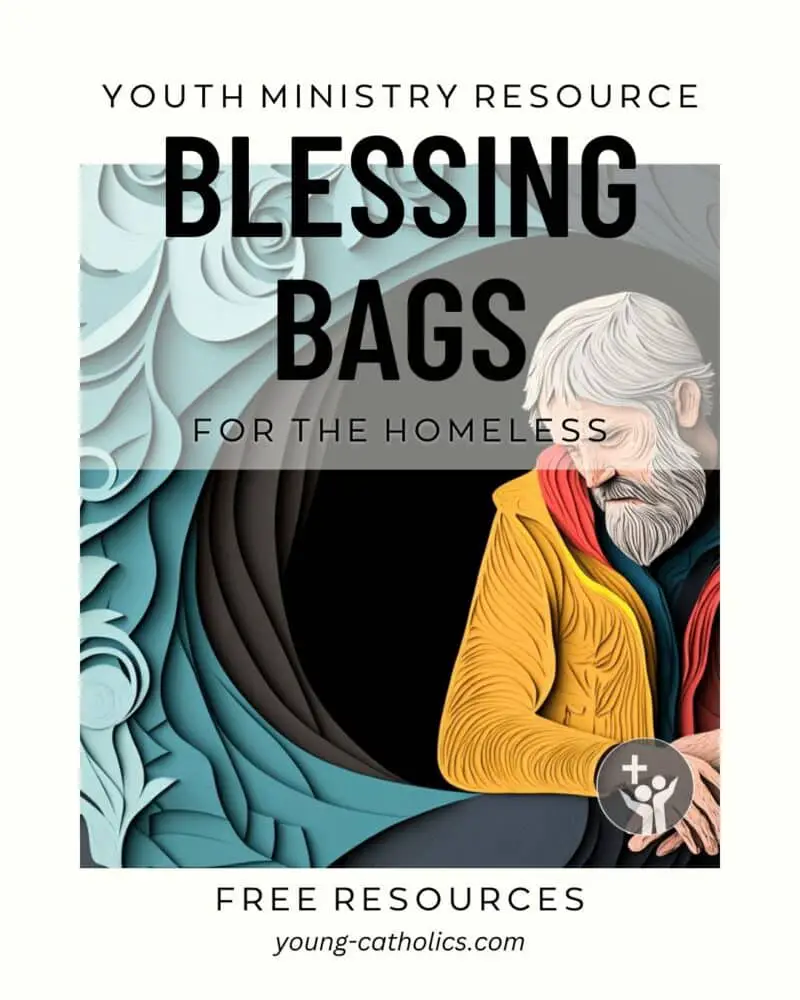
Make Blessing Bags for the Homeless
Another meaningful way to practice almsgiving during Lent is by making blessing bags for the homeless. These care packages, filled with essential items, can provide comfort and support to those in need. Consider including toiletries, socks, snacks, and a heartfelt note in each bag. By assembling these care packages and donating them to a local homeless shelter or outreach program, you are not only meeting practical needs but also showing compassion and empathy towards those experiencing homelessness. This simple act of kindness can make a significant difference in someone’s life and bring hope during difficult times.
Make Hot Cross Buns and Share Them with Someone
Hot cross buns are a meaningful way to practice almsgiving during Lent. These traditional buns, often served on Good Friday, symbolize the crucifixion of Jesus Christ. By making hot cross buns and sharing them with someone experiencing a difficult time, you can offer comfort and support. The act of baking and sharing these buns can bring joy and warmth to someone’s day, reminding them that they are not alone in their struggles. It’s a simple yet powerful gesture of kindness and compassion, spreading love and hope during the Lenten season.
Other Ideas for Almsgiving
In addition to the traditional acts of almsgiving during Lent, there are several other ideas that you can consider to make a difference in someone’s life. One such idea is to engage in the works of mercy. The works of mercy are acts of charity that we can perform to show our love and compassion for others. These acts include feeding the hungry, giving drink to the thirsty, clothing the naked, visiting the sick and imprisoned, and burying the dead. By actively participating in these works of mercy, we can bring comfort and support to those in need.
Another idea for almsgiving is to create an offering box. An offering box is a simple yet powerful way to collect money or items for those less fortunate. You can place the box in a visible location in your home or community and encourage others to contribute. The collected funds or items can then be donated to a charity or organization that supports those in need. This act of giving not only helps those in need but also fosters a sense of community and generosity.
By engaging in these other ideas for almsgiving, you can make a meaningful impact during the Lenten season. Whether it’s through the works of mercy or creating an offering box, your acts of kindness and compassion can bring hope and support to those who need it most.
The Spiritual Works of Mercy
The Spiritual Works of Mercy are acts of charity that allow us to support and accompany each other on our faith journey. One of these works is to counsel the doubtful, providing guidance and support to those struggling with their faith or facing tough decisions. By sharing our experiences and offering a listening ear, we can help others find clarity and peace. Another work is to bear wrongs patiently, showing forgiveness and understanding to those who have hurt us. Choosing love over anger strengthens our relationships and deepens our connection with God. Engaging in these Spiritual Works of Mercy fosters compassion and empathy in our communities.
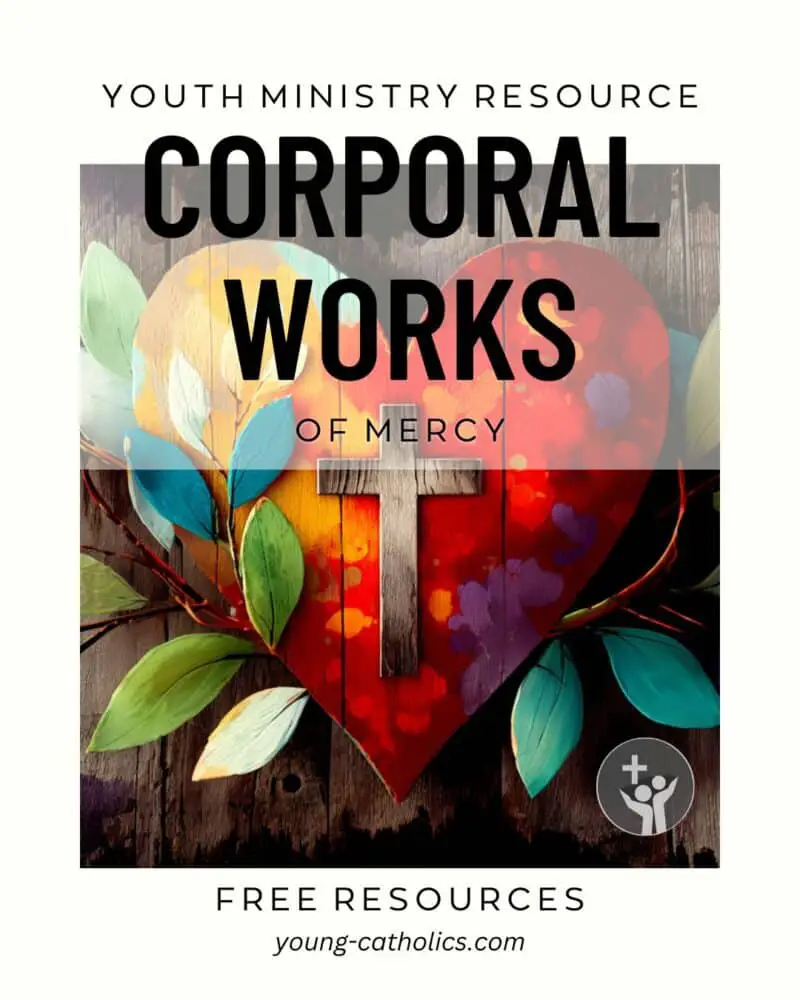
The Corporal Works of Mercy
The gospels show us that Jesus reached out to those in need, serving as a model for our interactions with others. One way we can follow His example is by engaging in the Corporal Works of Mercy.
These works are concrete actions that allow us to extend compassion and support to those who are suffering. By feeding the hungry, giving drink to the thirsty, clothing the naked, and sheltering the homeless, we can make a tangible difference in the lives of those in need. Through these acts of kindness, we embody the love and mercy of Christ during the season of Lent.
Make an Offering Box
An offering box is a meaningful way to make our Lenten offerings. It serves as a tangible reminder of our commitment to give back to the Lord during this season. Whether it’s monetary donations, acts of service, or prayers, an offering box provides a designated space to make these offerings. It can be as simple as a decorated jar or a specially crafted box. By using an offering box, we can actively participate in the spirit of Lent and deepen our connection with God through our generous contributions. Let this be a reminder to give selflessly and embrace the true meaning of Lent.
More Resources
The season of Lent is a time of reflection, repentance, and preparation for Easter. It is a time when many Christians engage in various practices and activities to deepen their spiritual journey. From prayer services to puzzles, there are plenty of options to choose from. These resources can help you engage with the themes of Lent and draw closer to God. Whether you are looking for a prayer service to accompany the Sacrament of Reconciliation or a fun activity to do with your family, there is something for everyone. So, let’s dive in and discover these valuable Lenten resources that can enrich your spiritual journey during this holy season.
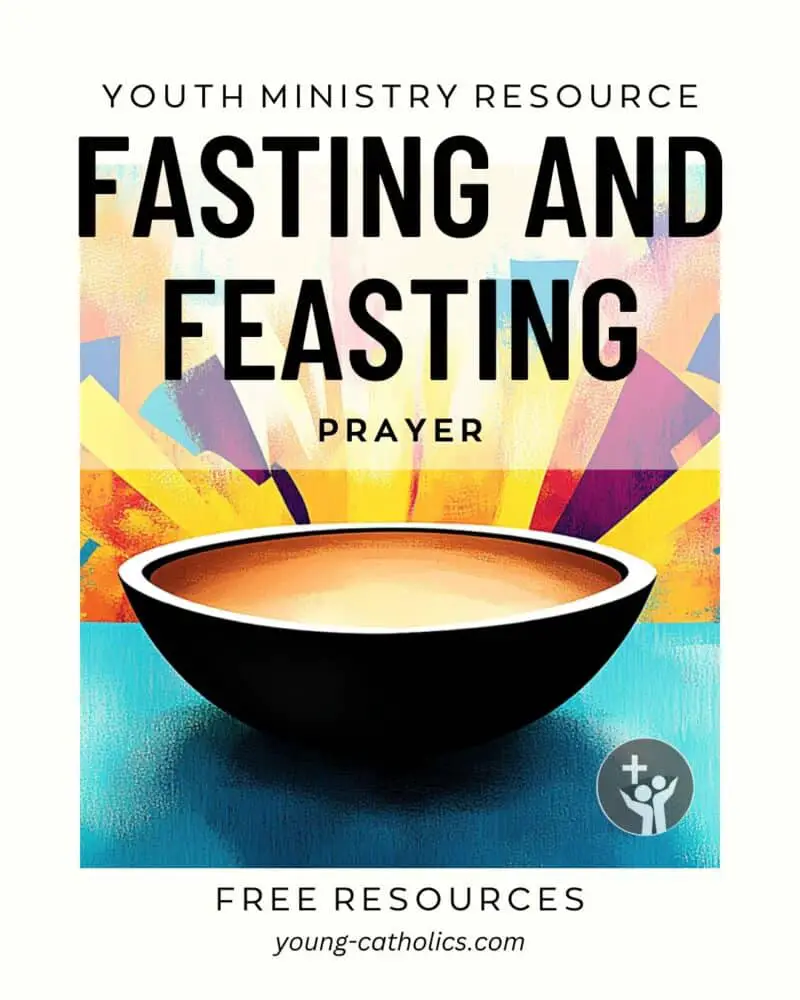
Fasting and Feasting Prayer
The Fasting and Feasting Prayer encapsulates Lent’s true essence. It’s not about suffering through sacrifice but about making space for spiritual enrichment.
This prayer guides one to fast from negative attitudes and actions, such as judgment, fear, and discontent, and to feast on positive virtues like compassion, patience, gratitude, and faith. It encourages a shift from self-centeredness to a focus on God’s presence and the good in others, highlighting the transformative journey Lent offers through fasting and feasting on spiritual gifts.

Washed Away Prayer Service
The Washed Away prayer service helps participants reflect on sin and God’s mercy. Using simple symbols like water and washing, it shows how Jesus cleanses us from sin. Participants write the word “sin” on their hands, pray silently or go to confession, and then wash it off. This symbolic act reminds us of the forgiveness we receive through Jesus’ sacrifice. The service closes with Psalm 51, asking God for a clean heart and a renewed spirit.
This prayer is especially meaningful during Lent, a time of reflection, repentance, and renewal. It fits well with Lenten themes like forgiveness and preparation for Easter. The Washed Away prayer service is ideal for youth ministry but can also be used in other group settings. It offers a practical and engaging way to focus on God’s love and mercy, encouraging participants to turn away from sin and grow closer to Christ.
Lent and Triduum Cryptogram Puzzle
Engaging youth in the Lenten season can be done through fun and educational activities. One such activity is the Lent and Triduum Cryptogram Puzzle. This printable puzzle introduces youth to the vocabulary associated with Lent and Triduum in an interactive way. Each word is encrypted, and definitions are provided to guide the youth in decrypting the words. By considering the definitions and using their problem-solving skills, youth can unravel the encrypted words and deepen their understanding of the Lenten season. This puzzle is a great tool to make learning about Lent and Triduum enjoyable and memorable for youth.
Make Jars with the Jelly Bean Prayer to Prepare for Easter
The Jelly Bean Prayer is a fun Easter prayer that can be a meaningful activity for your family or youth ministry. Take this prayer to the next level by making jars of jelly beans to give away during the Octave of Easter. Not only will this activity engage youth in the Lenten season, but it will also serve as a reminder of the hope we have in celebrating the resurrection of our Lord on Easter. Display these jars throughout Lent as a visual representation of our journey towards Easter. This hands-on activity will create a lasting impression and deepen the understanding of the Lenten season.
Jesus, Friend of My Soul
Joyce Rupp offers a daily Lenten guide starting from Ash Wednesday through Easter Sunday. This book provides two-page daily reflections focusing on Jesus’ life and teachings, encouraging readers to emulate his actions and qualities. Rupp explores instances like Jesus extending mercy and maintaining integrity, offering insights into how these actions can be applied in our lives. Each reflection includes a scripture verse, meditation, prayer, and daily intention, guiding readers towards personal growth and deeper faith. The book is suited for both individual and group study, fostering a closer relationship with Jesus during Lent.
Post a Religious Message to Social Media
If you’re not fasting from social media during Lent, why not use this platform to spread Christian messages? Instead of focusing on yourself, take the opportunity to share uplifting and inspiring content that aligns with your faith. By posting religious messages on social media, you can reach a wide audience and potentially touch someone’s heart with your words. Use this platform as a tool for spreading positivity, hope, and love during the Lenten season. It’s a simple yet impactful way to make a difference in the digital world and bring the message of Lent to others.
Go to a Fish Fry
Go to a Fish Fry and experience a beloved Catholic tradition during Lent. These gatherings not only align with the practice of abstaining from meat on Fridays but also foster a sense of community. Local news stations often publicize fish fries and provide maps on their websites, making it easy to find one near you. By attending a fish fry, you can connect with fellow Catholics and enjoy a delicious meal together. It’s a wonderful opportunity to strengthen your faith while building relationships within your community. Don’t miss out on this cherished Lenten tradition.
Social Media Graphics and Bulletin Artwork
Lent Begins at the Cross

Use this striking image to mark the beginning of Lent in your bulletins and newsletters. The vibrant cross with branching leaves reminds us that sacrifice brings growth and hope. Perfect for articles, reflections, or Lenten resource pages, this artwork helps draw hearts toward the meaning of the season.
Download it today to enrich your parish or classroom materials.
Paid subscribers may download a large copy this digital artwork without watermarks, suitable for use in bulletins, social media, newsletters, etc., free of charge by clicking here. You must be logged in as a paid subscriber to access the file.
Only current paid subscribers have the rights to use the artwork.
Frequently Asked Questions
What is Lent?
Lent is a season in the Church that helps us get ready for Easter. It is a time to pray, give to others, and turn away from sin.
Why do we fast during Lent?
We fast to grow in self-control and to remember the suffering of Jesus. Fasting helps us focus on God instead of ourselves.
What is abstaining from meat?
Abstaining from meat means we do not eat meat on certain days, especially Fridays during Lent. It is a small way to make a sacrifice for God.
Can Lenten sacrifices be something other than food?
Yes. You can give up TV, social media, or complaining. Anything that helps you grow in love and kindness is good.
How should we observe Lent?
We should try to pray more, help others, and give something up. Lent is a time to be honest with ourselves and ask God to help us change.
Why are there only forty days in the Lenten fast when Lent itself is 46 days long?
Lent lasts for 46 days, but Sundays are not counted in the fast. Sundays are always feast days, so the fasting days are still forty.
Can we partake in what we’ve given up for Lent on Sundays?
Some people do. Others keep their sacrifice the whole time. It is a personal choice. The Church does not require fasting on Sundays.
Why are prayer, fasting, and almsgiving emphasized during Lent?
These three things help us grow in faith, hope, and love. Prayer connects us to God. Fasting helps us say no to sin. Giving helps us love others.
Why is the word alleluia not used during Lent?
Alleluia is a word of praise. During Lent, we take a break from it to focus on sorrow for sin and our need for God. It returns at Easter.
What if I fail at my Lenten promise?
That’s okay. Lent is not about being perfect. It’s about trying again. Ask God for help and keep going.
Why is Lent so important in the Church?
Lent helps us remember what Jesus did for us. It gives us time to say sorry, to grow in faith, and to get ready for Easter.
How can children take part in Lent?
Children can pray more, help their family, and give up small treats. Simple actions done with love matter.
Do I have to do the same thing every Lent?
No. You can do something new each year. Choose something that helps you love God and others more.
Turning Back to God with Lent
Lent is a time to grow closer to God. It lasts for 40 days and helps us prepare for Easter. During Lent, we pray more, give to others, and give something up. These actions remind us of Jesus and help us follow Him.
Fasting and almsgiving are part of Lent. We give up things we enjoy to practice self-control. We help others with our time, money, or care. This shows our love for God and neighbor.
Prayer is also important during Lent. We can pray alone or with others. We ask God to forgive us and guide us. Lent is a season of change. It helps us become more loving, kind, and faithful.
We do not go through Lent alone. The Church walks with us. The readings, prayers, and songs all lead us to Easter.
Your Turn
Lent is a great time to slow down and listen to God. The readings help us see how others turned to Him in hard times. Take a moment to reflect on what God is showing you.
Have you had a powerful experience during Lent? Maybe you learned something new or gave up a bad habit. Share your thoughts in the comment section. Your story may help someone else.

Leave a Reply